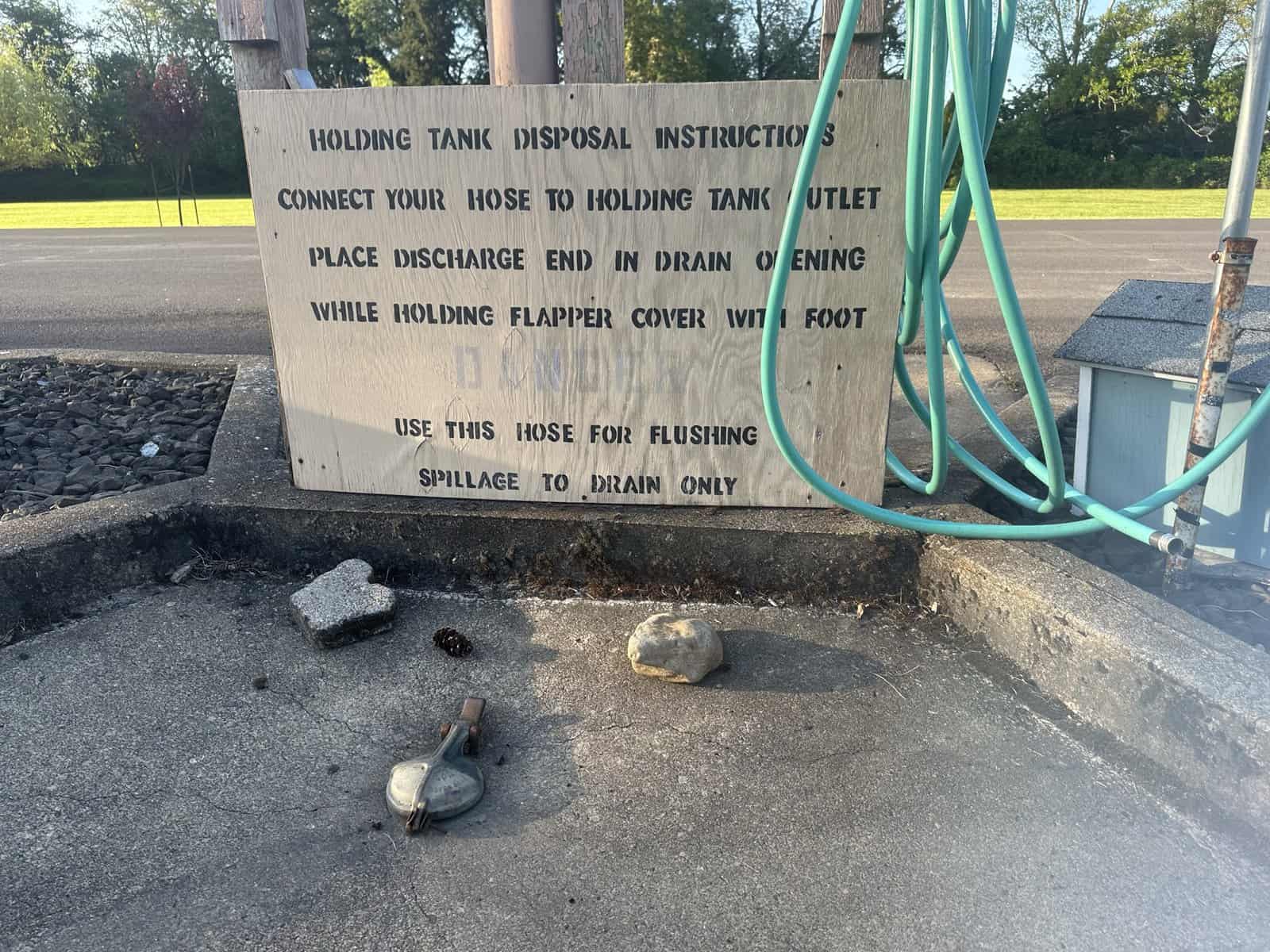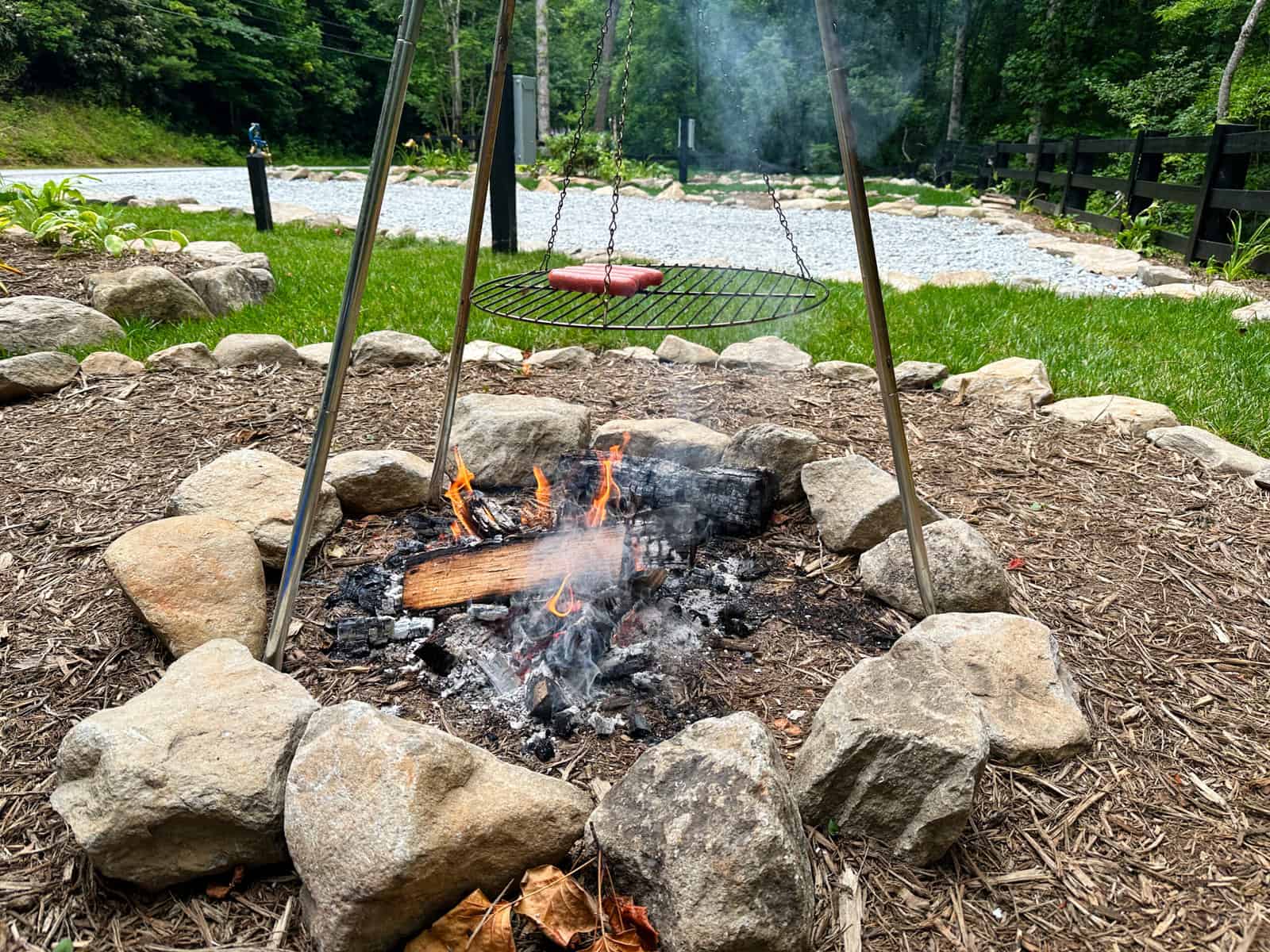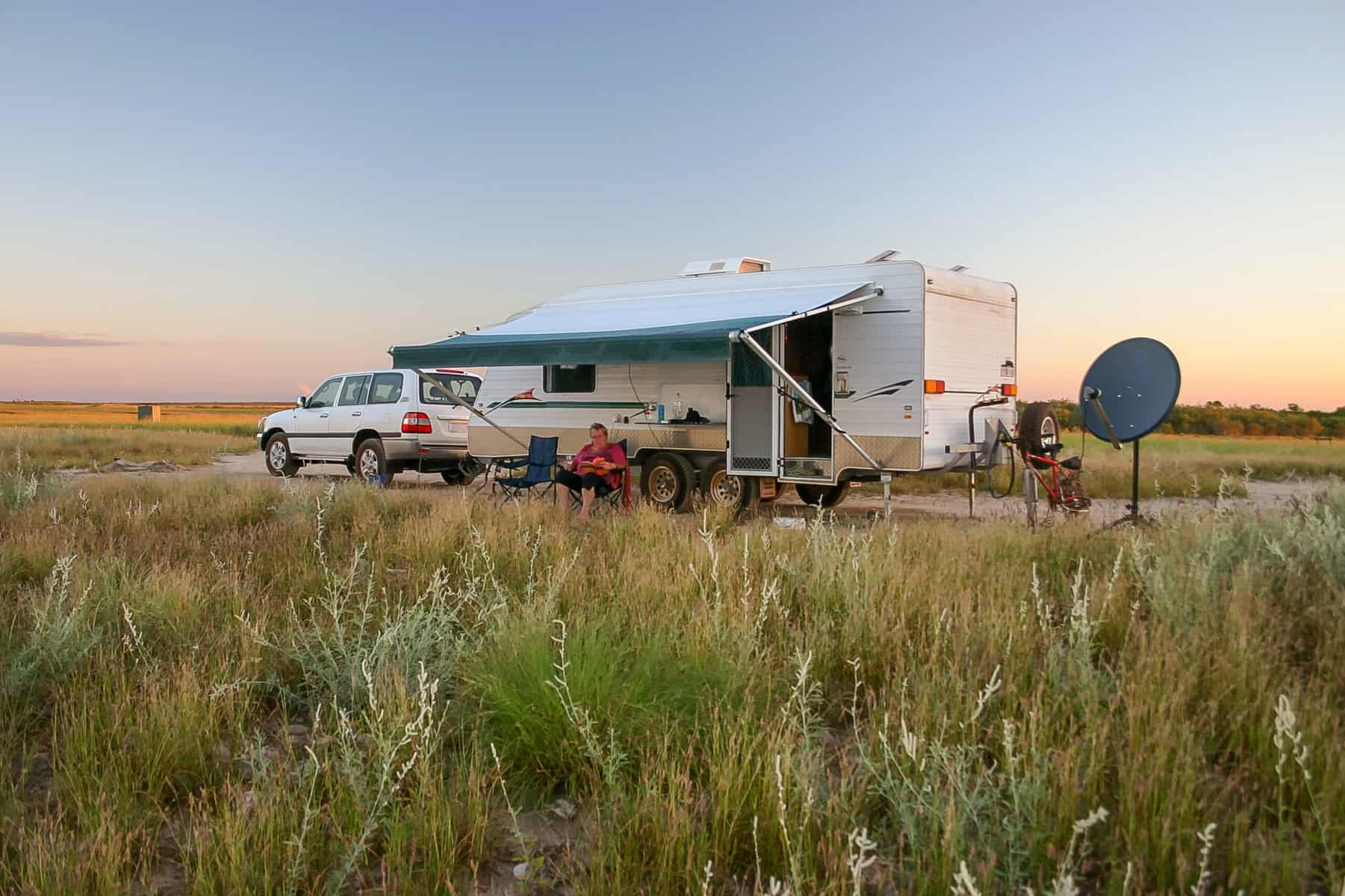Whether you just bought a brand new RV or you’ve had it for years, you need to have a versatile RV tool kit at the ready. Inevitably, you will need to use at least a few of these common RV tools for roadside repairs, emergencies, and regular maintenance. That’s because RVs take a ton of abuse when we drive them down the highway. “One thing that is for sure if you have a camper. You will need tools,” says iRV2 community member ArtJoyce in the discussion “Newbie needs a tool box item list” As a full-time RVer, I agree. I’ve discovered that it’s easy to save myself the hassle of costly repair services by having versatile items in my RV toolkit. You can do the same. Here’s how.
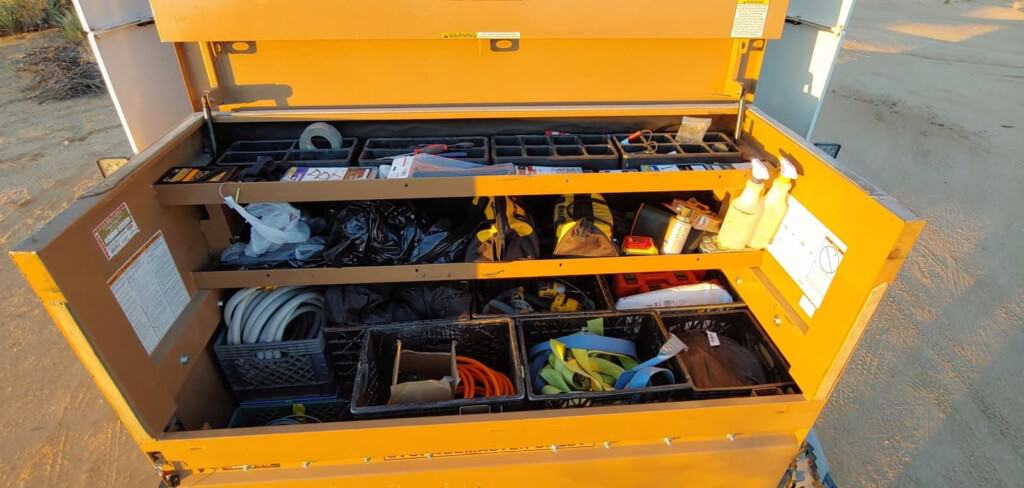
What To Carry in a Basic RV Tool Kit (and Why)
Below is a handy list of essential tools and safety accessories that I carry in my camper tool bag. Your list will look different. The contents always depend on an RVer’s level of comfort with emergency repairs and routine maintenance. However, I feel that this list is a good place to start. You can find these at any hardware store, and they all make great gifts for RVers any time of year.
Torque wrench
RV wheels take a lot of abuse whether we travel on highways and side roads. RV manufacturers know this and include instructions to torque RV wheel lug nuts every 100 miles. If RV lug nuts come loose, the wheels begin to wobble and can cause the lug nut holes to oval, as well as the wheels to fall off.
This is never any fun. Keeping your wheels torqued is a critical safety issue and needs to be done specifically as per manufacturers’ directions.
Tire pressure gauge
You should check that your tires are inflated to the recommended tire pressure every time you fill up with fuel. Regular monitoring with a tire gauge can help maintain vehicle stability and handling and will help to prevent costly (and potentially dangerous) RV tire blowouts.
Collapsible traffic cones
RVs are big vehicles. If they break down on the road, there isn’t always room to pull all the way onto the shoulder. There may not be enough room to safely change a tire or make other necessary repairs. A few traffic cones can buy you enough room to safely do necessary repairs or just keep other drivers from hitting your RV. Another use for traffic cones is to set them up to guide you when backing up a fifth wheel or travel trailer into a campsite.
Tire inflator/portable battery charger
Having a decent portable air compressor can mean the difference between calling a tow truck or not. Having the ability to get air into your RV’s tires without going anywhere will make life simpler and will bring you peace of mind. If you combine this with a portable battery charger, it’s even better. After all, there will be a time when you need to charge your RV or tow vehicle battery, and it’s better not to have to rely on a tow truck to do this.
Allied Tools Switch Grip Dual Action Pliers Tool
This is quite possibly the handiest tool you can have in your toolkit. The Switch Grip pliers tool has two different pliers, plus wire cutters and several gauges of wire strippers, in one tool.
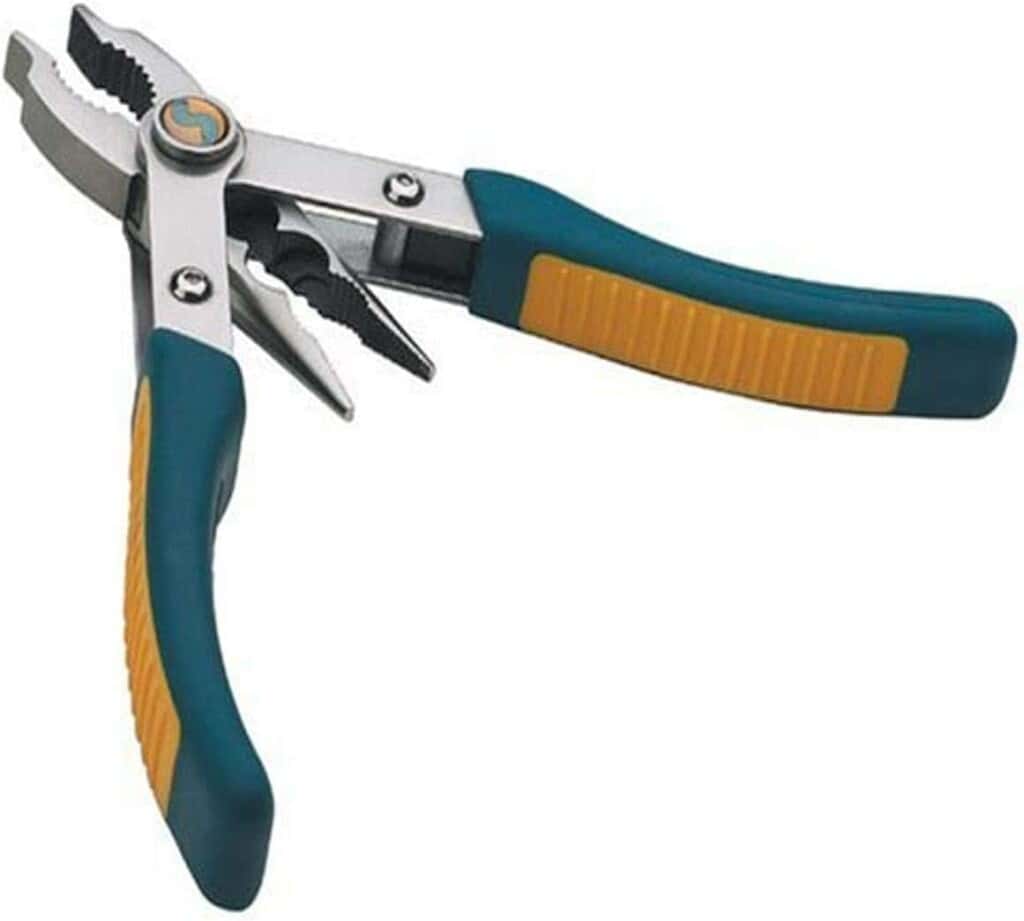
These remarkable pliers have a flat nose regular jaw. They also have a needle nose pliers jaw with a wire cutter and strippers for various gauges of wire. Everything is spring-loaded and it even has a locking function as well. There are so many potential uses for this tool in the RV that it’s a must-have.
I’m a new motorhome owner and putting some stuff together to keep on board. Obviously different makes/models will have certain things that others won’t, I’m just trying to come up with a generic list.
Comprehensive socket and wrench set
Assorted screwdrivers
Assorted pliers and vice grips
Small hammer and pry bar
Duct tape and electrical tape
Electrical kit (dykes, strippers, wire, connectors, solder gun, fuses, test light)
Extra quart of motor oil, starting fluid, WD40
Gloves, shop towels, Oil Dri/kitty litter/sawdust
Flashlight and extra batteries
Jumper cables
Tow strap (you never know!)What else?
@djgaston, iRV2 Forums, “Class A Tool Kit“
Adjustable crescent wrenches
An eight-inch adjustable crescent wrench can be used to adjust nuts or bolts or tighten fittings. It’s not perfect, but it’s lightweight. Carrying a couple of crescent wrenches beats packing a full wrench set with you when you travel.
12-Volt DC test kit
“Every RV needs a 12-volt DC test kit,” writes RV Technical Advisor Dave Helgeson. All 12-volt DC RV electrical systems operate important gear such as ceiling lights, TV / Radio, Water pump, Furnace fan, Exhaust fans, and electronics that keep the refrigerator and water heater operating.
Helgeson explains that “12-volt DC power is one of the most important systems in your RV. It is also one of the more likely systems to need minor repairs from time to time. Fortunately, it is also the most field repairable in terms of parts, diagnostics, tools, and repair time.”
When you have 12-volt electrical problems, a 12-volt DC test kit is handy. It consists of items such as a Volt ohm meter, 12-volt test light, digital multimeter, wire connectors, crimper, and electrical tape. See Helgeson’s article Make a DIY 12-volt DC Test Kit for the entire list.
Zip ties
Zip ties have so many uses around the RV, from keeping cords from getting tangled to keeping the RV’s propane lid from getting blown off. No RV toolkit is complete without them.
Cordless drill with screwdriver drill bits
A cordless drill isn’t just for RV repairs. When you pull into camp, setting up is the first thing you do and the last thing you want to spend a lot of time doing. A small cordless drill with screwdriver bits tighten or screws and can be used with a scissor jack socket drill adapter to get leveling jacks up or down in a hurry with hardly any effort. Just don’t forget to buy a scissor jack socket drill adapter, which effortlessly extends and retracts scissor jacks in seconds.
RV roof repair tape
Carry a roll of RV roof repair tape (the brand name is “Eternabond”). This adhesive backed tape can quickly seal a small crack or divot in the roofing material or fiberglass of your RV. Keep in mind it’s just a temporary fix for roadside repairs until you get to an RV service center.
Gorilla tape
Gorilla Tape functions like duct tape, but the adhesive is even stronger. This all-purpose adhesive tape tends to stay fixed in place better. Like duct tape, it comes in different colors, but it also comes in clear. This makes it perfect for fixing small tears on your road trip adventures. Along those line,
I am a full-time RVer. My list of must-have tools is as tailored to my own needs as yours will be to you. But I feel it’s a good place for any RVer to begin building their own.
Get more RV Repair Kit Ideas:
- 20 Essential RV Tool List and Kit Essentials: 20 essential tools that we think every full-time RV tool list should include
- Newbee needs a tool box item list; iRV2 Discussion Forums:
- Essential Tools: Jayco Owners Forums

